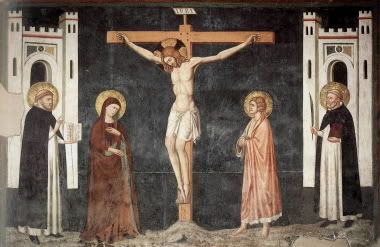
One of the most spectacular meteorological phenomena in the world is a rare cloud formation called the cloud of Morning Glory. Usually, it is only observed in Northern Australia’s Gulf of Carpentaria. A Morning Glory cloud can best be described as a roll cloud that can be more than 600 miles long, over a mile tall, and can move at speeds up to 25 miles per hour.
The morning glory is often accompanied by sudden wind squalls, intense low-level wind shear, and a sharp pressure jump at the surface. In the front of the cloud, there is strong vertical current that sends air up in the cloud and creates the rolling appearance, while the air in the back side becomes turbulent and sinks. The cloud can also be described as a Solitary wave, a wave that has a single crest and moves without changing speed or shape. Despite being studied extensively by Australian meteorologists, the Morning Glory cloud is still not clearly understood.
At once both entrancing and frightening, it essentially looks like a giant white tidal wave in the sky. It was named “morning” because that is the usual time of day when the formation appears, due to the moisture in the atmosphere. The name “glory” comes from the awesome display of the energy in motion by the clash between hot and cold. No one would deny this formation the word "glorious." But is glory best illustrated by this gigantic cloud, or by the gentle flower called the Morning Glory?
Glory is something which is seen or experienced, more than understood. Indeed, it is difficult to come up with one definition to understand the word "glory." Glory is perhaps instead a quality that best helps us understand something else. For this reason, God uses ordinary things as signs of his glory.
The things are “ordinary” in the sense that they are natural things that we experience everyday—like sunshine, clouds, fire, hail, beauty, acts of kindness, music, or most anything else. God uses ordinary things for extraordinary purposes. God uses them to get our attention, to convey a mystery, to reveal his majesty. The Greek word for glory, doxa, indicates a worthwhile quality. The Hebrew word for glory, kabhod, comes from the root for heaviness. God uses ordinary things as signs of the weight of his glory.
Isaiah pointed this out. He liked to use the word "signal" (or “ensign” in the King James Version). Simple things are used as ensigns to call people to come experience God’s glory. In chapter 11, the Prophet writes, “And in that day there shall be a root of Jesse, which shall stand for an ensign of the people; to it shall the Gentiles seek ... he shall set up an ensign for the nations, and shall assemble the outcasts of Israel, and gather together the dispersed of Judah from the four corners of the earth.”
The simple birth of a child heralds the glorious dawn of eternal salvation. Jesus is the ultimate sign of God’s glory—his life and death and resurrection reveal that glory. When the Christ child was presented in the Temple, the aged Simeon recognized it, saying that he was now ready die in peace. "For my eyes have seen thy salvation, which thou hast prepared in the sight of all people, a light for revelation to the Gentiles and for glory to thy people Israel.” A baby was the sign of the glorious dawn of salvation.
What makes something a sign of glory is not the dramatic nature of the sign, but the importance of that which it is used to reveal? For this reason, true glory is often hidden from view. Many people look upon the sign and see something ordinary. Others discern the glory and are brought to their knees in humble recognition of divine majesty.
In today’s gospel reading, Jesus said, “Now has the Son of Man been glorified, and God has been glorified in him.” Is this the moment we’ve all been waiting for? Is this the unveiling of the majesty of the Father and the Son? An outside might have missed it entirely, but then I don’t know if the insiders fared much better. And yet, according to what Jesus said, this is the moment.
The curtain is rising, the search lights are beaming, the trumpets are blasting, heaven and earth are calling our attention. The betrayer has just sealed Jesus’ destiny. Judas has chosen to go through with his plan of betrayal, which means that the hour of glory has come—the crucifixion of our Lord Jesus Christ.
The resurrection was a more direct display of God’s power. The ascension called our attention to the heavenly realms of glory. Yet, the it is the crucifixion which occupies “the hour of glory” in John’s Gospel. That is to say, all the glories of the risen and ascended Christ are fully unveiled in his passion and death. There is no glorious moment in the story of the good news than when the Lord of heaven and earth pours himself out in love so that sins may be forgiven and the gates of heaven be opened. There is no more glorious thing than sacrificial love.

To put it another way, true glory is not found in the reward, but in the sacrifice. Think of a great monument; the glory is not in the monument, but in that which it commemorates. The most glorious thing is love, and the nature of love is the gift of self. Now that they are going to be separated, Jesus called upon his disciples to follow that example. He called them anew to the love which fulfills all the commandments of God. "I give you a new commandment: Love one another the way that I have loved you.” That is, I want you to give yourselves away for others, as I will do for you. That's how people will know that you are my disciples.
Christians are supposed to love God and to love one another. That means giving ourselves away . . . to God, to each other, and to those who will come after us. That’s what it means to love; that’s what it means to truly live. Quaker philosopher Elton Trueblood once wrote, “A man has made at least a start on discovering the meaning of human life when he plants shade trees under which he knows full well that he will never sit.”

The Father is gloried by the perfect obedience of the Son, even unto death. The Son is glorified by the Father in manifesting divine love to the world. Some of the most glorious things often look the most ordinary—the birth of a baby, the execution of a criminal, or the unfolding of a morning flower. All of God’s glories shine through the light of the cross.

The most glorious among us are the most Christ-like among us. That Christ-likeness involves looking to the future, seeing what the real priorities are, and putting others before ourselves as an expression of love. I submit to you today that this is the most glorious way to live—living as a sign for others, living lives of sacrifice, the majesty of giving ourselves away.


No comments:
Post a Comment